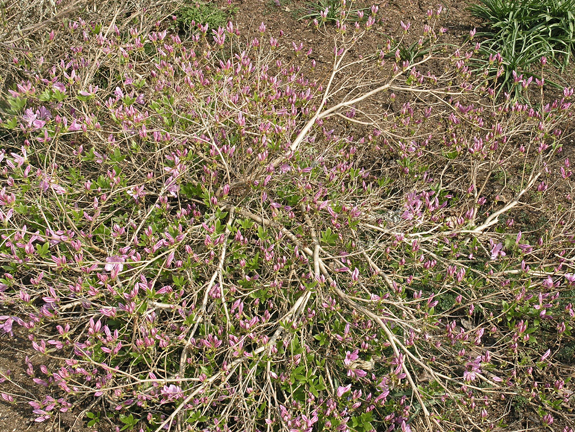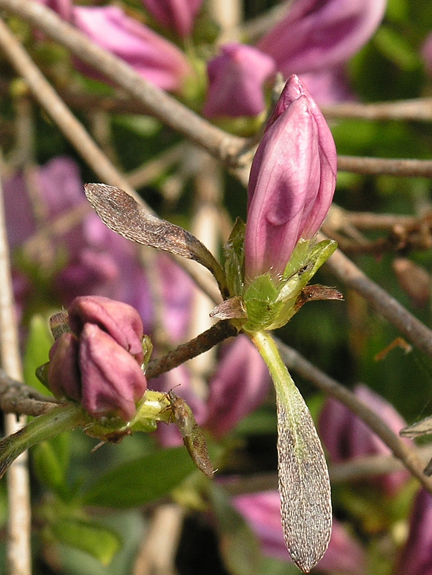| General Description | Korean Azalea is a low to medium-sized shrub which is evergreen in mild winter climates, but deciduous in cold winter climates. In spring, it has a deep green foliage. The leaves get thicker and narrower during summer, and their color turns into attractive orange-red in autumn. |
| ID Characteristic | This plant is poisonous, therefore, it is not edible. Although, it has been used in East Asia for medication purposes. The bark of this plant is known to prevent or treat neurodegenerative diseases such as AD and Parkinson’s disease. |
| Shape | Semi-upright crown shape with dense branching. |
| Landscape | Mass or group planting is recommended because it can tolerate rabbits, and attract hummingbirds and butterflies. |
| Cultivation | It is best to have acidic, dense, organically rich, medium moisture but well-drained soil. It does not like wet soil and it could cause root rot. It is best to plant in part to full sun sheltered areas, and ensure the root does not dry out. It has a shallow root system that can retain moisture and stabilize soil temperatures in organic mulch, but it should not be planted around shrubs. If attempting to plant Rhododendron in clay soils, raised planting beds are recommended. |
| Pests | This plant is susceptible to many insects and diseases such as canker, crown rot, root rot, leaf spot, rust, powdery mildew, aphids, borers, lace bugs, leaf hoppers, mealy bugs, mites, nematodes, scale, thrips and whitefly. It is known to have good resistance to root rot. |
| Notable Specimens | Commerce gardens in England and groups of plants along the Mountain. |
| Habitat | East China, South Korea, Japan. |
| Bark/Stem Description | The bark has yellowish-brown-coloured strigose hairs on new shoots. As it gets mature, its colour turns into grey brown and it loses its hair. |
| Flower/Leaf Bud Description | It is a torch shaped brown bud surrounded by 2 leaves, and it is covered with white hairs. |
| Leaf Description | Leaves are glabrous deep green colour during spring and turns into orange-red colour in autumn. Leaves are alternately arranged and its size is about 3-8 cm. It is simple long narrow elliptic shape leaves. Leaves have hairs on both sides and especially near veins. Their inner upper part has dark red spots. Leaf size varies: 3 - 8 cm in length. |
| Flower Description | Flowers are rose to pale lilac-purple with flecks. The flower opens before or with leaves. The corolla is broadly funnel-shaped. Its size is about 3.8 - 6.3 cm and divides into 4 pieces. The flower has 10 stamens with the style and is usually covered with long soft hairs towards base. Peduncle is covered with brown hair. |
| Fruit Description | The fruit is of a capsule type and is about 0.08 - 0.1 cm in size. Its shape is egg-like and has long hair. The fruits ripen in September. |
| Colour Description | Its foliage changes colour from deep green to orange-red in autumn. |
| Texture Description | The bark peels off in a fish-scale shape. |

